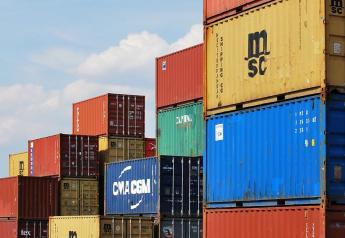Nalivka: Winners And Losers In The Trade Dispute
Trade is the hot topic, and for good reason, but record or near-record production in agriculture is also a worthy topic. Hitting new records for U.S. production of all agricultural products has become more common over the last several years. Production efficiency, partly as the result of consolidation coupled with technology, is a key factor pushing U.S. agriculture toward greater production. These efficiencies benefit both farmers and ranchers in terms of costs of production, but also benefit the American consumer with lower food prices.
Lower prices for high quality, safe food means Americans spend only between 8% and 10% of their disposable income on food, a figure largely unmatched anywhere else in the world. However, going back to production agriculture, record production leads to volatile markets and subsequently, producer’s net income has become increasingly less predictable. Less predictability translates to increased risk, which is always the challenge.
I have stressed the importance of value-added and branded programs as a hedge against lower commodity prices and as a marketing strategy to enhance net income. I recently wrote an article stressing the need for ranchers and farmers to assess and shift their production toward revenue enhancing markets that consumers are increasingly labeling as important in their purchases both in the supermarket and in the restaurant.
Certainly, an emerging opportunity for boosting commodity prices is export market growth. This has been the case for all commodities. And, with trade on the front burner, there has been no shortage of discussion on this front. And while tariffs generally create uncertainty in the market and certainly create some level of angst among free traders, myself included, there is another aspect to lower prices with regard to grains. This shifts the conversation back to the livestock and poultry industries and feed costs.
At least for the short term, the export picture has changed, and there is no doubt it has been a factor along with a large crops in pressuring prices. To the grain farmer, this is negative but to the livestock and poultry producer (end-user), this is positive – winners and losers. This has always been the predatory situation between the grain, livestock, and poultry industries. Go back to my earlier statement as to why American consumers enjoy relatively low food prices. The situation is no different – efficient production benefits consumers with lower prices.
There is no doubt that feed costs in the feedlot and on the hog finishing floor going into 2019 in the face of record beef and pork supplies would change the outlook for both industries. So, while I am not advocating for reduced grain exports, manageable feed costs are always a positive aspect for the livestock outlook.
Related Content:
Nalivka: Considering Beef Demand
Nalivka: A Deep Dive Into The Cattle Inventory







